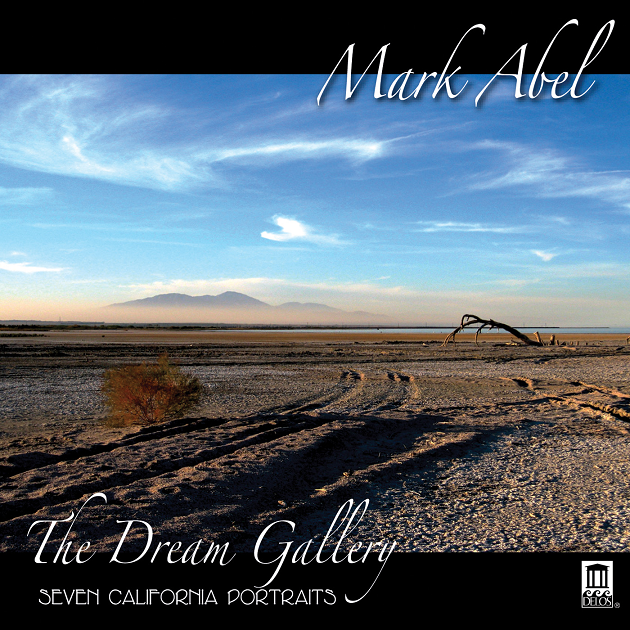|
Back
04/24/2012
Mark Abel: The Dream Gallery (Seven California Portraits)
Helen (Los Angeles), Todd (Taft, Kern County), Naomi (Berkeley), Carol (San Diego), Lonnie (Richmond), Luz (Soledad, Monterey County), Adam (Arcata, Humboldt County)
Mary Jaeb (soprano), David Marshman (baritone), Janelle DeStefano (mezzo-soprano), Delany Gibson (mezzo-soprano), Carver Cossey (bass), Martha Jane Weaver (contralto), Tom Zohar (tenor), La Brea Sinfonietta, Sharon Lavery (conductor)
Recorded at Studio A, Citrus Colege, Glendoran, CA – 69’23
DELOS DE 3418 – Booklet in English with Photos, Bios, Notes, and Song Lyrics

   
This superb recording of composer Mark Abel’s latest composition, The Dream Gallery, has already received the Award of Excellence (for Lyrics) and the Award of Merit (for originality and creativity), which is presented by Global Music Awards (GMA). The Dream Gallery, which is a 70 minute orchestral song cycle, recalls the famous Russian composer Modest Mussorgsky, as it is in many ways a modern version of his Pictures at an Exhibition. First of all Mr. Abel, like his Russian predecessor has found a new and original musical language in which to write, that he describes as a fusion of Classical Music with Contemporary Rock. Secondly the song cycle is composed like a gallery of very colorfully painted portraits and pictures.
These psychologically penetrating songs capture the state of mind of seven present day Californians whom he calls Helen, Todd, Naomi, Carol, Lonnie, Luz, and Adam. He details these characters most perceptively in an atmosphere of what might be described as the remains of the “California Dream”, coloring them with elements of both satire and compassion. He plants these archetypal characters in various locals throughout the state, and it must be said that Mark Abel has an uncanny knack for musically capturing the atmospheres of these various topographies and terrains.
Mr. Abel has composed his own lyrics, which truly give a strong unity of vision to his composition as the texts meld perfectly with the music, and they convey a wide range of issues and behavior patterns. Which in his own words range from “big-city swagger, elitist conceits and the struggle of immigrants to betrayal, racial scape-goating and environmental devastation.”
This is a major new American song cycle, which is going to be much discussed and weighed by musicologists and critics in the coming months. I believe it is a recording you will enjoy and want to own, and if you have ever lived in California for any length of time as I did in the 1980’s, the music will take you there once again. You might even experience what is often called…Déjà vu!
The music does indeed have the weight and sophistication of “classical music”, but I do not hear the Rock influence in any strong way. To me the sound is more of what I would call “New Age.” The guitars and percussion are there to be sure, but there is also much use of the harp and the strings, with very little if any use of the “in your face” punch of Rock and Roll. All to the better for my tastes. The cycle employs the gamut of classical voices (soprano, mezzo, contralto, tenor, baritone, and bass, sorry…no countertenor) and all of the singers perform most admirably as does the La Brea Symphonietta under the fine direction of Maestra Sharon Lavery.
I enjoyed this song cycle much more than I expected. I found it profound and compelling in many ways, and I was enticed to multiple listenings. I have placed it on the shelf next to my recordings of Leonard Bernstein, Elvis Costello and Kurt Weill.
ConcertoNet is on Facebook
Twitter: @concertonet
Micaele Sparacino
|